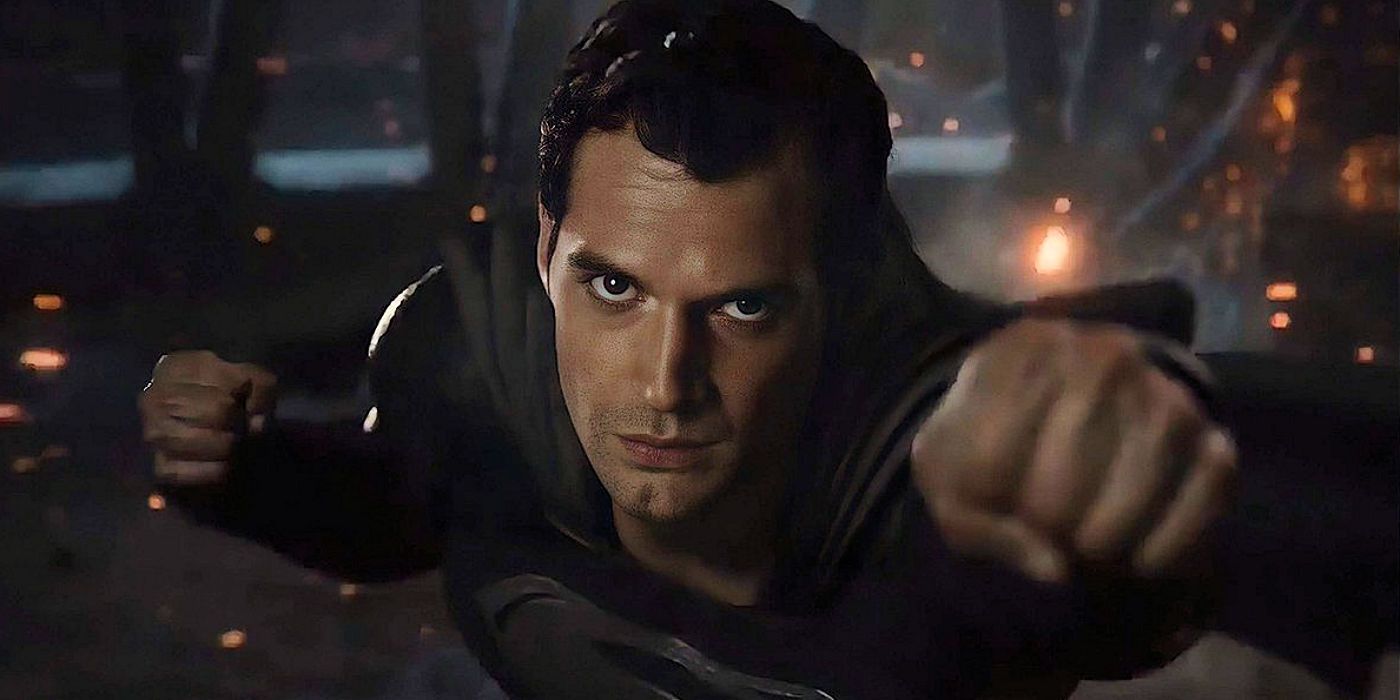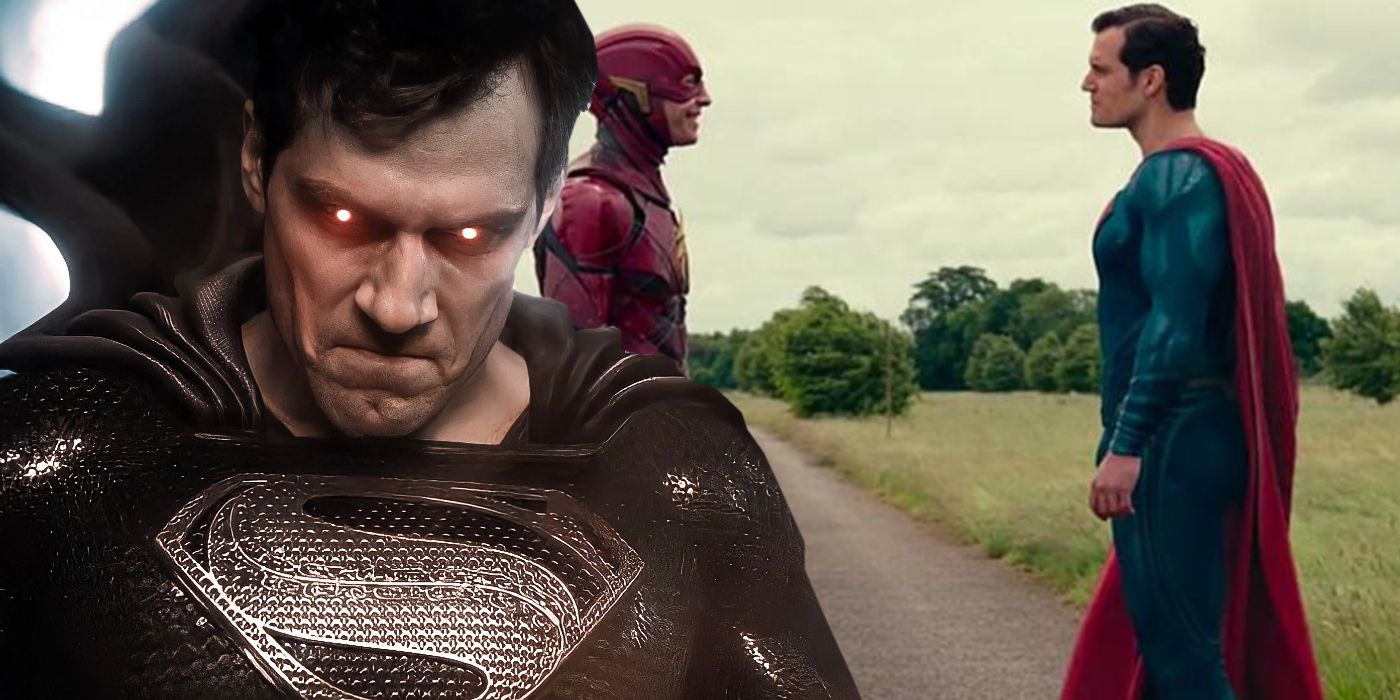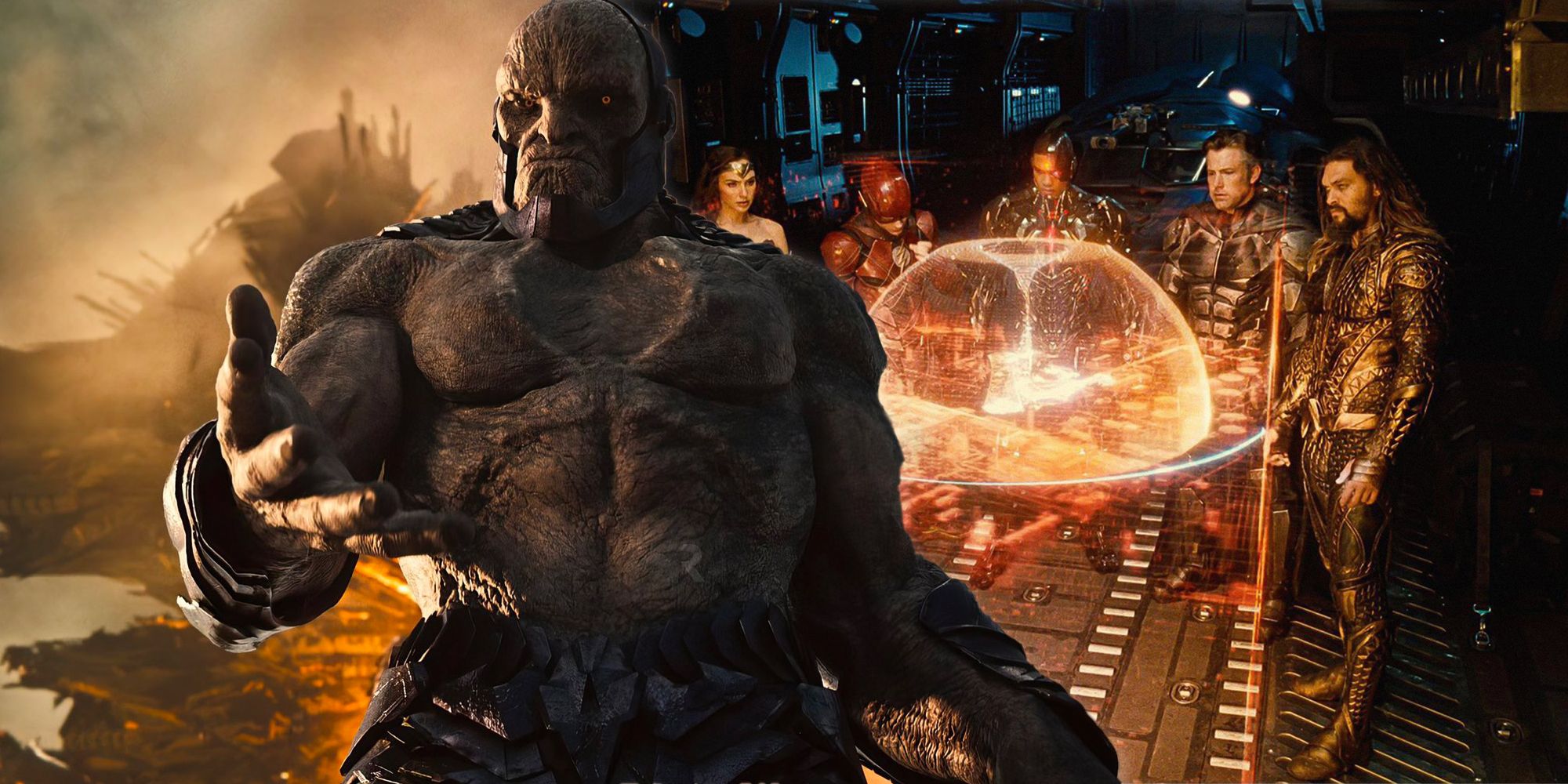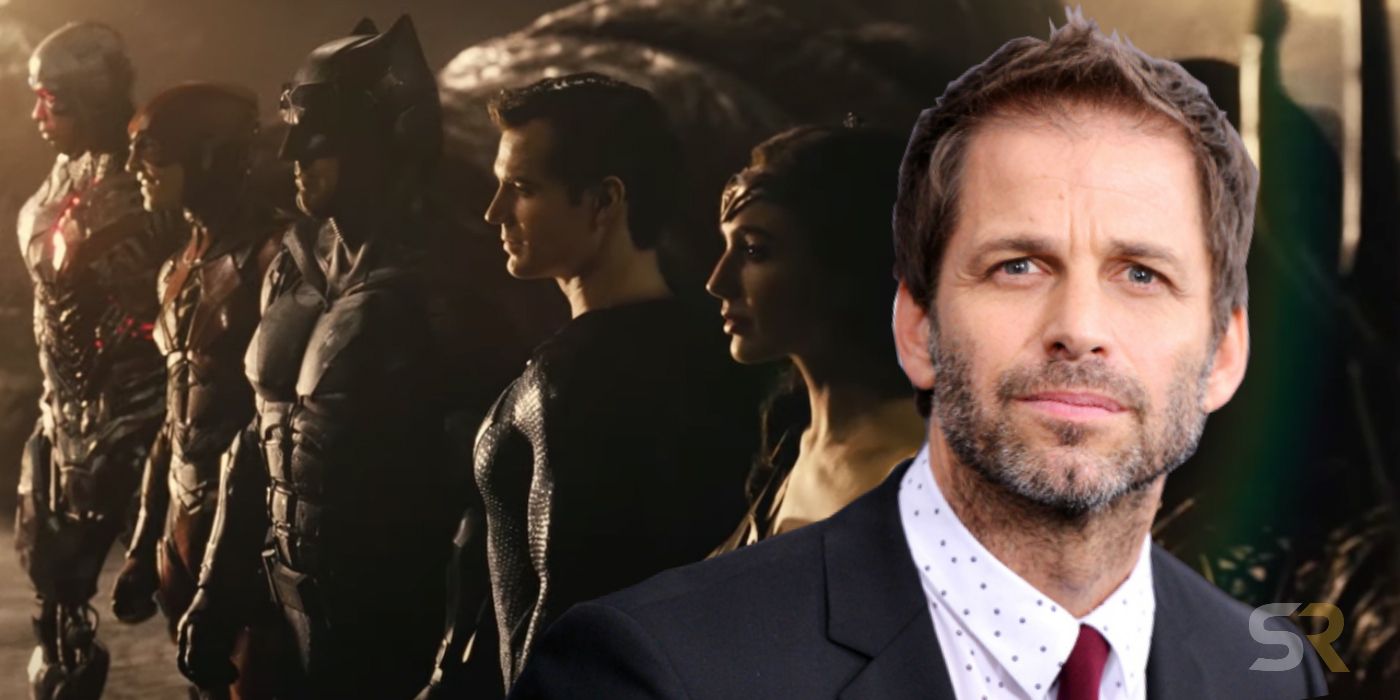The Justice League Snyder Cut has finally released on HBO Max, but how does it compare to the 2017 version released in theaters? Is it a better movie? And, more importantly, is it actually good?
The story of how Zack Snyder's Justice League came to be is a convoluted one. The short version is that, during the making of DC's team-up movie, director Snyder stepped away from the project (following the death of daughter Autumn) and Warner Bros. enlisted Joss Whedon to take on substantial reshoots to retrofit the film more in-line with their vision for the DCEU (in reaction to the divided reception to Batman v Superman: Dawn of Justice in March 2016). The result was a Frankenstein of a movie - Whedon's additions and adjustments taped in jovial performances, different framing, poor CGI and an overall decidedly un-Snyder aesthetic - that proved a commercial and critical disaster, making a mere $657.9 million on its reported $300 million budget against a swathe of negative reviews.
Over the following four years, fans campaigned for Zack Snyder's cut in various manners as the director teased his substantially different version of the film in black-and-white shots. Questions of its completed nature became moot when, on May 20, 2020, Snyder announced the 4-hour movie would be released on HBO Max in 2021, with a reported $70 million budget invested in CGI and reshoots.
Now, that day has finally arrived. The Snyder Cut has been released and is available for the whole world to see. And after all the anticipation and promises and Vero postings, the truth can be seen: what exactly does Zack Snyder's Justice League offer?
How Justice League's Snyder Cut Is Different
To understand the differences (and improvements), it's important to understand what Zack Snyder's Justice League actually is. It is, in many ways, the movie intended to be made when production took place in 2016. The majority of the footage comes from principal photography, with only a handful of extra or expanded scenes coming via 2020 reshoots or recompositions; nothing from the Whedon period remains, meaning 75% is new footage. However, there are some clarifications in that. It's not what Snyder initially set out to make following Batman v Superman: the production was impacted by that movie's backlash, meaning certain aspects - such as a subplot involving a Batman/Lois Lane romance - were cut before cameras rolled. Nor is it what would have released in theaters had he not left the project: at 242 minutes, it would have been cut down substantially for general release (similar to Batman v Superman and Watchmen, both of which have more substantial cuts on home video). But it is nevertheless the purest Snyder version of the movie.
As a result, while the Snyder Cut is a little less all-imposingly dour compared to Batman v Superman, it's far from the Marvel-aping quip-fest of the Whedon adjustments (although several jokey moments remain). If 2017 Justice League was a Saturday morning cartoon riff, Snyder's is aiming to be a comic book event brought to life (with low-R violence and language). There's a strong consistency in visual style (one that's desaturated, hyper-real and presented in a 4:3 aspect ratio) and a vastly increased scale to the worldbuilding (Atlantis, Themiscyra, Central City, Apokolips and Snyder's Knightmare are all visited).
One immediately obvious distinction is the length and pacing. The baseline plot is the same - the Justice League forms and resurrects Superman when Steppenwolf comes to Earth to unite the Mother Boxes and destroy the planet - but the pacing is much slower and every inflection point expanded upon: every scene is longer, every character beat extended. There are a handful of new plots, specifically in the Darkseid/Knightmare area, but for the most part it's about giving every character clearer and more developed arcs, and ensuring the plot actually hangs together; apart from a few finer points in the villains' grand plan, every aspect of the narrative is more plainly and robustly laid out. HBO Max considered releasing the Snyder Cut as a miniseries, and it has a feeling comparable to that in parts.
This has a strong impact on characterization. The heroes downplayed in Whedon's version - Ray Fisher's Cyborg, Ezra Miller's Flash - get their full arcs restored and placed at the center of the story, while the inconsistencies in other - notably Ben Affleck's Batman - are mostly gone (although his role in action scene still relies heavily on guns). Henry Cavill's full Superman performance is restored, with no CGI upper lip in sight, giving Amy Adams some opportunity to show why Lois Lane is "the key". Villain Steppenwolf has defined motivations. And many of the cut supporting cast - Kiersey Clemmon's Iris West, Willem Dafoe's Vulko, Zheng Kai's Ryan Choi and Harry Lennix's Martian Manhunter - are reinserted.
Is Justice League's Snyder Cut Better?
Due to the nature of his departure and subsequent accusations about Whedon and others' conduct on the set of the reshoots, the Justice League Snyder Cut became about more than just a single movie or the direction of a franchise. It's an unusually public example of the sweeping and destructive decisions made in big business, of abuse going unchecked, of personal loss. But even removed from that, it's a story of artistic integrity. Zack Snyder was hired to make a movie, and when he left the project his vision was completely redone. For him to be able to finish what was started has a strong sense of justice.
From an artistic standpoint, the Snyder Cut is an inherently more complete work. It's a single auteur's vision, even if segments of it were shot half-a-decade apart. Put alongside the corporately mandated 2017 theatrical version with its inconsistent framing shot-to-shot, incomplete CGI, and out-of-place sexual jokes, there's no competition. Even with its unprecedented length, there's very few aspects at all that could be said to not be improved on; most of the standout moments from Whedon's Justice League cut originate from Snyder footage so are either presented identically or with more tone-fitting visuals and placement. The Snyder Cut of Justice League is a better movie in every way possible.
Is Justice League's Snyder Cut A Good Movie?
The theatrical release of Justice League is rightly regarded as one of the worst films of the 2010s. To be better than it is such a low bar is not difficult. And while many reviews of Zack Snyder's Justice League have looked at the 4-hour behemoth through the filter of the previous release, it's important to take it on its own merit. Removed of all the above context, is the Snyder Cut a good movie?
That is up to the eye of the beholder, not just because of the innate subjectivity of any art but more specifically the aura surrounding this specific director. Few filmmakers are quite as divisive as Zack Snyder, and none have quite the same mainstream permeation. For every vehement defender of his distinct, no-compromise approach to iconic characters, there's a detractor confused and affronted in equal measure. One thing the journey to his Justice League cut has propagated is an increased understanding of Snyder; even if his work isn't appreciated, many acknowledge his unique directorial approach as part of wider auteur theory. And given all that, it's best to describe Justice League as both the most Snyder and the grandest example of everything that entails.
For ride-or-die Snyder fans who've waited for the release with hashtagged anticipation, then Zack Snyder's Justice League delivers on almost all of its promises. Some of the differences from previous movies in lightness are certainly noteworthy - oddly, it appears the reshoots were replacing places that already had humor - but it's a fair thematic continuation of the DCEU up to 2017. For those keen to see a SnyderVerse restored, there's even more to dig into (even if Jared Leto's Joker scene is the only incongruous scene in the movie thanks to its close-up reshot nature).
For those who've struggled with both Man of Steel and Batman v Superman - or even Snyder agnostics - the answer is a little trickier. The Snyder Cut is a movie that uses both Arthurian legend and nursery rhymes as reference points, and much of its theming is similarly shotgunned. It's not just long, it's narratively loose, meaning scenes exist more in isolation than a grander narrative; the film is slow for the first half, which can be tough in one sitting and means that the energized final battle rings a little short or underplayed. The Knightmare and Darkseid aspects never feel fully relevant to the present story, similar to the subtitle-giving aspects of Dawn of Justice. These issues are consistent with all of Snyder's work, and are both softened and amplified by the scale.
Fundamentally, the Snyder Cut is an epic in length, but not truly in its scope: it crosses multiverses yet is held in so tight on a basic plot. There's a sense that, similar to both Watchmen and Batman v Superman, a much improved three-hour version exists. In this case, not from extra material but in the finessing of what feels slow or lumbering.
-
Ultimately, though, the takeaway shouldn't be about the Snyder Cut being good or bad. Nor should it really be about it being better. It's about the immense and unique story it represents, a rare case in Hollywood of a proper and admitted redo. Between the 2017 and 2021 versions, Zack Snyder's Justice League shows how the same fundamentals can result in two vastly different products; and how studio meddling can completely alter a picture's vision and intent.




